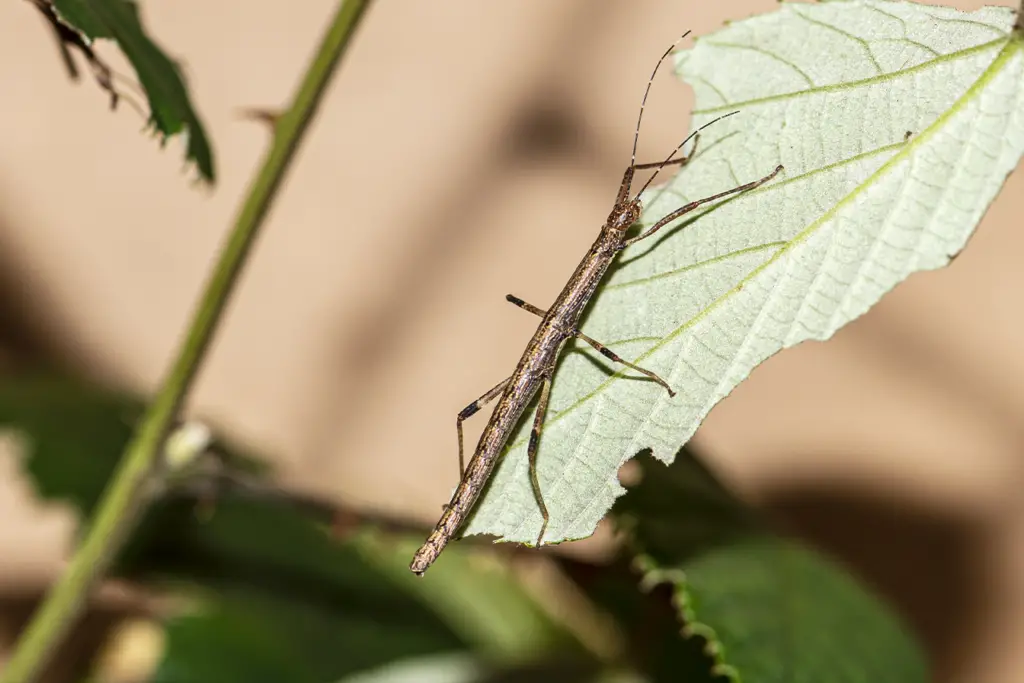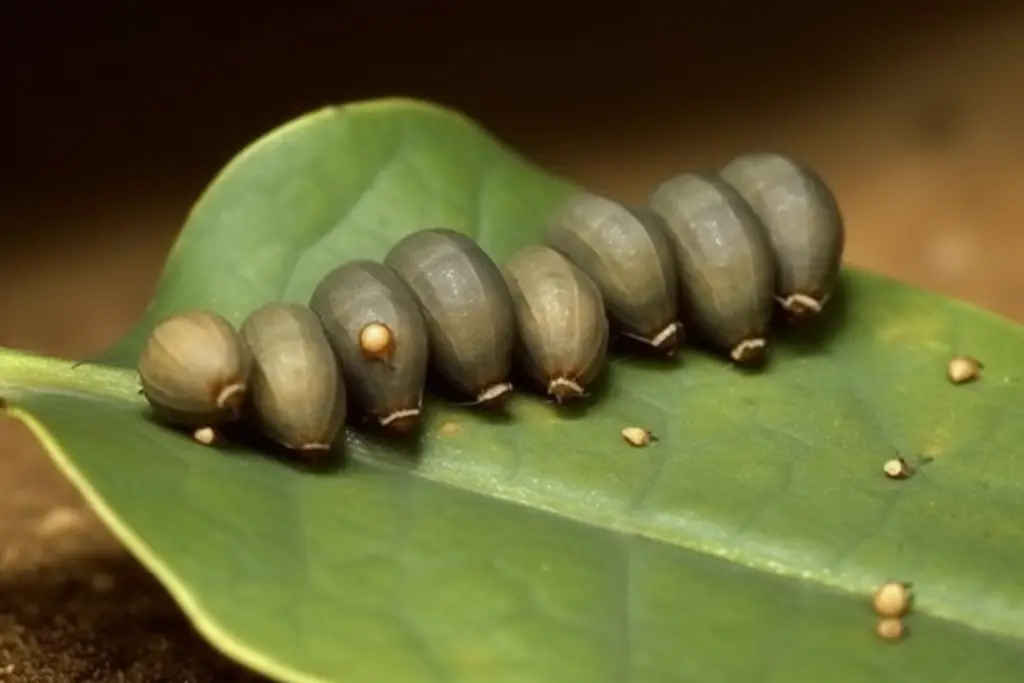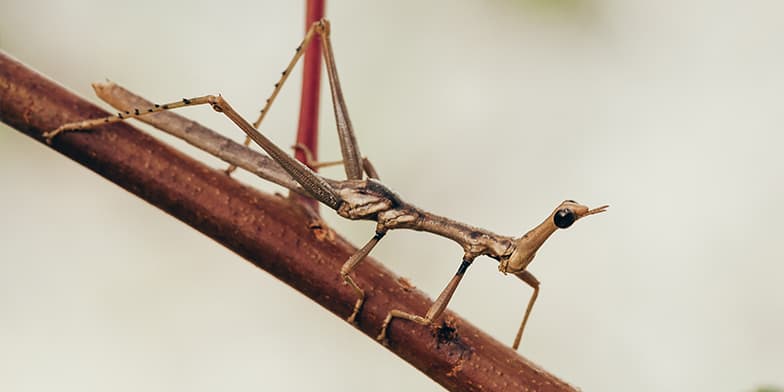
It’s hard not to be fascinated by the world of insects, and one that tends to draw a lot of interest is the stick bug, also known as the humble walking stick. Of all the insects of the United States (and other parts of the world, for that matter) none master camouflage quite like the walking stick. But where can you specifically find these awesome little creatures?
Walking sticks, also known as stick bugs, live in tropical, subtropical, and temperate regions all over the world. The 3,000 different species of walking stick insect thrive in the forests and grasslands on every continent in the world except Antarctica and Patagonia.
If you’re wondering if your backyard is the perfect place for finding walking sticks, read on to find out more about their favorite and preferred habitats, the continents and areas that have those habitats, and what you may discover when you encounter a walking stick, then let’s dive a little deeper.
Habitat
In order for a habitat to be suitable to a stick bug, it has to have the three essentials to the walking stick’s survival: food, water, and places to rest or use for its eggs.
What do Walking Sticks Eat?
There’s an old saying, “you are what you eat,” and no one takes this more literally than walking sticks and their leaf bug counterparts. Sort of. Walking sticks don’t actually consume sticks per se, but they do enjoy leaves and some vines.
Naturally, each species is going to have its preferred leaf. In the stick bug’s case, such as the Thailand stick bug, their favorite treat is usually bramble leaves, which stay green through the winter months and help them survive to the next spring.
Some other examples are the Peruvian Golden-Eye walking stick that favors privet hedges, the North American 6 inch “Giant” walking stick insect that loves oak leaves and grapevines, and the Western North American which adores weeds.
However, while preferred, they know better than to be picky and will eat a variety of green, leafy sustenance. And the fresher, the better. Even when they first hatch, a walking stick’s first meal will be the leaves of the plant the eggs were laid on or laid next to.
Of course, a habitat has to provide more than food, it also has to give the stick bugs places to rest.
Where do Walking Sticks Rest?
In spite of their excellent camouflage, walking sticks aren’t active during the day. Instead, they’re nocturnal, feasting on your rose leaves by night. One reason for this may be that their greatest predator, the bat, isn’t fooled by their disguises because they use echolocation to distinguish their prey from twigs and leaves.
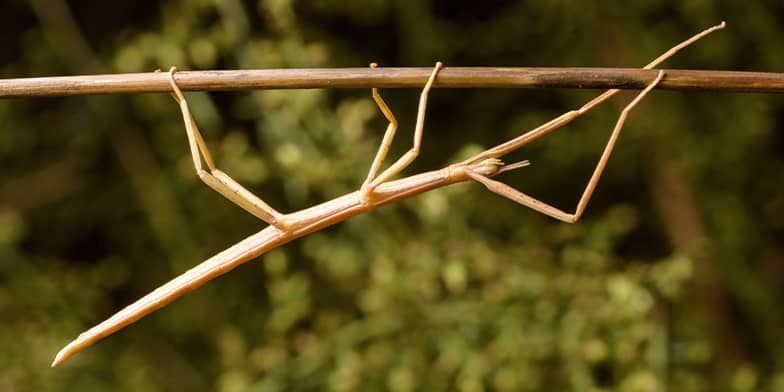
This means they need somewhere to rest and hide during the day, which is naturally in bushes, trees, and shrubs. In daylight, these crafty critters do everything possible to resemble the bark of the twigs and then hold tight, keeping perfectly still while they wait for dark.
Where do Walking Sticks Lay Their Eggs?
Once a male and female stick bug have followed one another’s pheromones, enabling them to find each other, they spend either several days or several weeks in courtship before it’s finally time for the female to deposit her eggs somewhere.
There’s no single place a female walking stick will lay her eggs. In order to protect her hundreds of eggs that she has to lay at a single time. One way is for her to attach them to leaves or other parts of plants.
She might also lay them one at a time far enough apart that a predator or threat won’t be able to destroy the whole batch at once, place them in hard-to-reach and obscure hiding places, or, bizarrely enough, will entrust them to ants.
The ants will bring the eggs back to their nests. Safe from predators, the eggs are able to hatch and the stick bugs are free to leave the ant nest while the ants feed on the walking stick’s egg capsule that is rich in fat. This last method is only used by certain species of stick bugs. The Northern Walkingstick, also known as the Common Walkingstick in North America, is one of these species.
Where do Stick bugs Live?
According to National Geographic, there are about 3,000 species of leaf and stick bugs, the majority of which can be found in the tropical and subtropical forested areas of the world, but a good few can also be found in temperate forests and grasslands.
These areas provide the greatest amount of hiding places to make it hard for the stick bug’s predators to find them. In other words, nearly anywhere leaves can be found, you can probably find some species of walking stick insect.
The most common walking stick found in the United States, a temperate region, Timema Cristinae, and it’s only a half-inch long. Borneo, a tropic region, happens to be home to the Phobaeticus Kribyi, a 13 inch long variant of the species.
No two places are exactly the same, which means the species you come across will be totally distinct from any other. This means that depending on what their surroundings are like, walking sticks will be green, brown, bright-colored, have stripes, have wings, be wingless, have cool spines, and more. Their whole goal is to blend in after all, so whatever their environment is like, they will imitate.
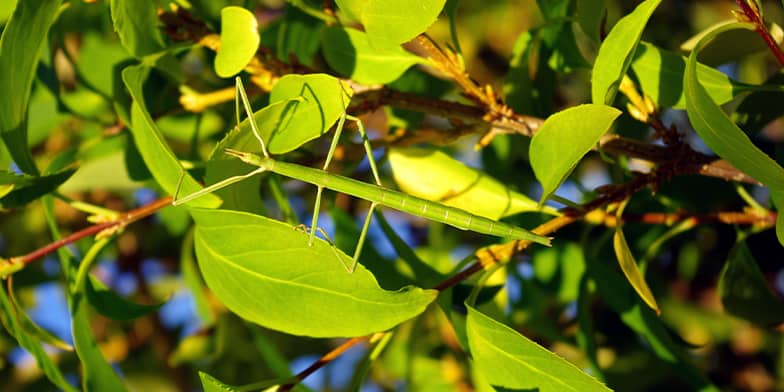
Continents
According to the National Wildlife Federation, these various stick bug species can be found on every single continent, with the exception of Antarctica and Patagonia.
The bulk of the stick bug population can be found in South America, Southeast Asia, and Borneo thanks to the tropics’ diverse abundance of resources. They also have their leaves all year round, which makes it significantly easier on these living twigs to find food.
The densest populations of walking sticks are in North and South America, Central America, Southeast Asia, Borneo, and Australia.
Anyone living on these continents has a high chance of coming across these diverse micro-chameleons be it the nearly invisible brown Common Walking stick in North America, the spiny and dark Central American Rhynchacris Redtenbacher, The stocky and short African and Astralasian Lonchodidae Brunner von Wattenwyl, or the wide Australian Extatosoma tiaratum.
These particular insects are as diverse as the foliage they mimic. It turns out the butterfly isn’t the only insect with an extensive wardrobe and seemingly endless diversity. With that kind of variety, explorers should also be aware of the various anti-predator defenses stick bugs have. Such defenses include changing colors, making loud noises, entering a cataleptic state, or the spines on their body.
A notable defense mechanism from the North American Anisomorpha buprestoides that searchers should be wary of is its noxious fluids. Although practically harmless, this twig will spray you with something far more horrendous to your nose than what a skunk can emit.
Conclusion
In short, Stick Bugs, or Walking Sticks, can be found everywhere, and if you happen to live in a neighborhood in a wooded area, or at least has a multitude of trees and bushes, you can likely spend a worthwhile afternoon looking for these hard-to-see sticks. There’s nothing like encountering your first walking stick as a kid by picking up a stick and just happening to see the legs just right. There’s also no experience like picking up a short stick only to discover it’s actually a 12-inch-long living creature. You never forget!
Driven by a passion for those tiny creatures that rule our world, we at Bug Domain strive to be your go-to resource for information on insects.


